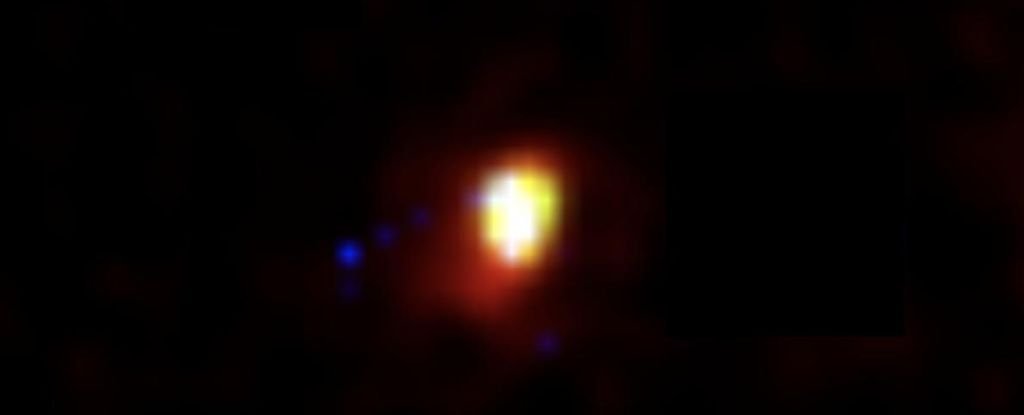Products You May Like
It’s a record that has been broken multiple times over the past two years alone, and one that we expect to see broken again soon.
Astronomers using the newly operational James Webb Space Telescope (JWST) have announced the discovery of what appears to be the most distant galaxy yet.
If this sounds familiar, it’s already happened twice this year. In April, astronomers announced their observation of a galaxy in a moment of time just 330 million years after the Big Bang. Last month, in other JWST data, another was found at a point 300 million years after the Big Bang.
The new record-holder, however, is mind-blowing. Discovered in the murk of the early Universe, it represents a time just 235 million years after the Big Bang … practically a cosmic eye-blink, in the context of the 13.8 billion-year age of the Universe.
The discovery of the galaxy candidate, named CEERS-93316, marks the beginning of something wonderful: Webb is poised to throw the early Universe wide open, giving us an unprecedented view into the dark and mysterious reaches at the beginning of, well, everything.
A paper led by astrophysicist Callum Donnan of the University of Edinburgh has been submitted to the Monthly Notices of the Royal Astronomical Society, pending peer-review, and is available on preprint server arXiv.
The first billion years after the Big Bang are of intense interest to cosmologists. During this time, the hot, quantum soup that filled the Universe after it winked into existence somehow started to form everything: matter and antimatter and dark matter, stars and galaxies and dust.
Because light takes time to travel, any light reaching us from distant space represents an event buried deep in the past; so, in effect, light is a time machine for distant reaches of the Universe. But the early Universe – really early – is more challenging: it’s so far away that any light that reaches us is very, very faint.
What’s more, the expansion of the Universe has stretched even the most energetic waves into lackluster rays closer to infrared parts of the spectrum, making even the more visible objects hard to read.
This makes detailed reconstructions of that time very difficult. Which is all the more the shame, since it’s such a critical time.
The era before the first stars were born was referred to as the Cosmic Dawn. Commencing nearly 250 million years after the Big Bang, it filled the entire Universe with an opaque cloud of hydrogen atoms.
It wasn’t until ultraviolet light from the first stars and galaxies reionized the neutrally-charged hydrogen that the entire electromagnetic spectrum could propagate.
Thanks to this Epoch of Reionization, by around one billion years after the Big Bang light could once again shine unimpeded.
Naturally, we want to know more about the Universe’s youth during this foggy period; how those first stars formed in the dawn clouds, how galaxies came together, how supermassive black holes could form so quickly in the first hundreds of millions of years of existence. Peering back at that distant, misty time is one of the primary tasks for which Webb is designed.
Webb can capture near-infrared and infrared light, with the highest resolution of any telescope ever sent into space. It is designed to excel at detecting those very highly redshifted galaxies, so that cosmologists can finally get a detailed look at what’s happening, if not at Cosmic Dawn, then at least during Reionization.
CEERS-93316, according to Donnan and his colleagues, has to be at least pretty close to one of the very first galaxies after the Big Bang. The team ruled out other potential explanations for the dim, red glow, and their analysis suggests that star formation in the galaxy candidate had to have started sometime between 120 and 220 million years after the Big Bang.
In order to confirm the object’s identity, however, follow-up spectroscopic observations will need to be undertaken. This would hopefully confirm the redshift; from there, the object could become the subject of further, more detailed study, and help construct a census of early Universe objects.
If CEERS-93316 is a galaxy, it probably won’t be wearing the Most Distant Galaxy Ever sash for long. Even if CEERS-93316 doesn’t turn out to be a galaxy that distant, odds are good that we won’t have long to wait for Webb to turn up an object that is.
Bring us those dim, red, distant treasures, Webb. We can’t wait.
The research was submitted to the Monthly Notices of the Royal Astronomical Society, and is available on arXiv.
